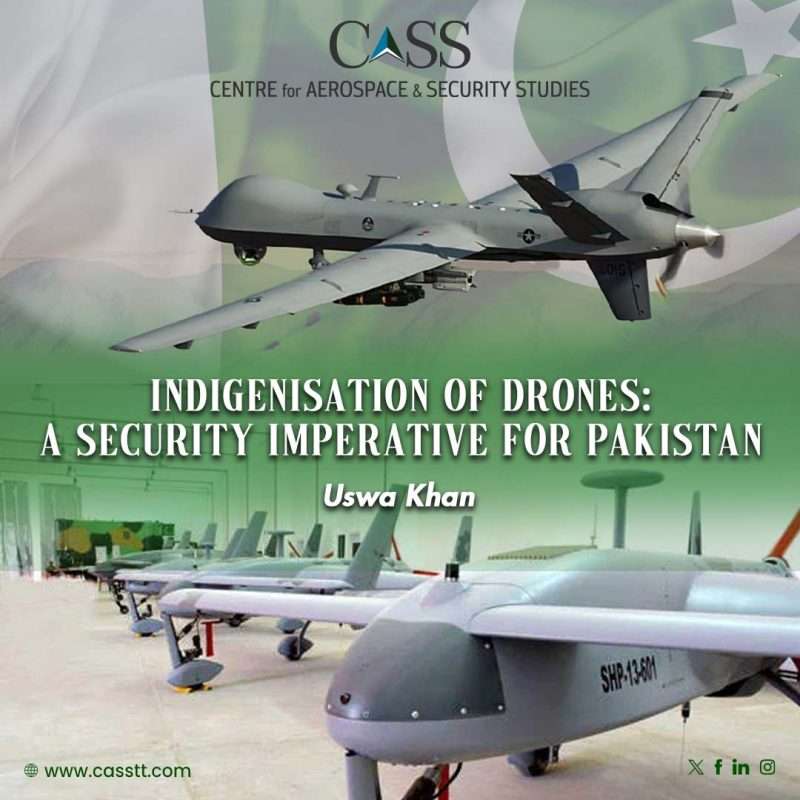For any state, it is of paramount importance how it guarantees national security. This can be ensured through the use or threat of use of force and also mobilising its defence sector in times of conflict and war. In other words, it revolves around the defence capabilities that allow a state to carry out fundamental functions including ‘preventing, deterring, coercing and countering national security threats’. Here, one of the most crucial components of defence capability is retaining superior military hardware vis à vis the adversary. Similarly, it is in the vital interest of a state to maintain a balance between defence imports and exports to avoid dependency on foreign suppliers. However, given the globalised nature of military technology, it is impractical to achieve hundred percent indigenisation of the defence sector. Nonetheless, the need to promote self-reliance in the defence industry is equally important.
Development of advanced technologies and the revolution in military affairs have added a unique dimension to the conduct of warfare. For example, conventional military equipment has to some extent been replaced by state-of-the-art weapon systems like AI-integrated military systems, Unmanned Combat Aerial Vehicles (UCAVS), etc. Over 95 states are said to have active military drone programmes. Subsequently, use of Lethal Autonomous Weapons (LAWs) and combat drones is a new normal in contemporary warfare.
UCAVS are becoming a standard and a crucial tool in armed conflicts. Their employment is entirely dependent on mission requirements and their specifications i.e., payload, altitude, and range. These are extensively used for surveillance, intelligence gathering and reconnaissance purposes along with identification and precision targeting. One of the biggest benefits of inducting drones in a military fleet is ‘cost-effectiveness’. On average, a drone costs around 3% with limited blast zones making it cheaper and more efficient as compared to a fighter jet worth billions of dollars.
In South Asia, the pace of acquiring and indigenously manufacturing drone technology is increasing especially by Pakistan and India. In 2010, India successfully tested its first indigenously developed UAV, Rustom-I. Whereas, Rustom-II (Tapas 201) another medium-altitude, long-endurance (MALE) was launched in 2016. It can carry a payload of 350 kilogram and is able to perform of multiple-mission capabilities such as electronic intelligence (ELINT), communication intelligence (COMINT) and intelligence gathering. India is also procuring Unmanned Aerial Vehicles (UAVs) from the United States and Israel. Nevertheless, the Indian government is constantly emphasising on indigenisation of defence equipment in line with its policy of self-reliance – ‘Aatmanirbharta’.
Similarly, Pakistan has also been developing its domestic drone programme. In 2009, the National Engineering and Scientific Commission (NESCOM) in collaboration with the Pakistan Air Force (PAF), developed its first indigenous UCAV ‘Burraq’. It was capable of carrying a 50-kilogram payload with 200km range. Burraq which carries a Barq air-to-surface laser guided missile is based on the characteristics of the American Predator and Chinese CH-3 Rainbow. It was deployed for counterterrorism purposes to target terrorist hideouts of Tehreek-e-Taliban Pakistan (TTP) in North Waziristan.
Furthermore, a medium altitude and endurance armed tactical UAV, Shahpar I was indigenously developed by Global Industry Defence Solutions (GIDS). It was inducted in 2013 for ISR and disaster management. Following Shahpar I’s successful induction, Shahpar II was developed and launched in 2021 with enhanced combat capabilities. This UCAV carries guided missiles, ISR sensors with Environmental Standard 810F. The latest Shahpar III was launched in 2023. It has advanced features as compared to the previous two models. For example, it has a synthetic aperture radar, extended endurance, enhanced weapon load, and advanced sensors. Additionally, it can carry a payload of 1,650 kilograms.
Pakistan also possesses tactical UAVs such as UQAB and SATUMA Jasoos II, both of them developed domestically. Besides manufacturing indigenous drones, Pakistan also procured Falco drones from Italy in the past. Currently, Pakistan has acquired 5 Cai Hong 4 (Rainbow 4) from China, and Bayraktar Akinci A category from Türkiye. Undoubtedly, the integration of both domestic and foreign UAV technologies has strengthened Pakistan’s UAV fleet.
While having defence suppliers is important, it is pertinent to ensure that the state works towards ensuring self-sufficiency with respect to its defence related equipment in the longer run. In addition to depleting foreign exchange reserves, excessive defence imports can cause macroeconomic burdens. Furthermore, indigenising defence equipment, especially manufacturing counterparts and products opens the door to jobs and skills creation leading to a more stable and prosperous economy. While Pakistan’s efforts to develop domestic UAV technology are commendable, it is equally crucial to prioritise the development of robust anti-drone capabilities. By doing so, Pakistan can proactively neutralise potential future drone incursions, ensuring a balanced approach to both offensive and defensive unmanned aerial strategies.
Uswa Khan is a researcher at the Centre for Aerospace & Security Studies (CASS), Islamabad, Pakistan. She can be reached at cass.thinkers@casstt.com.




